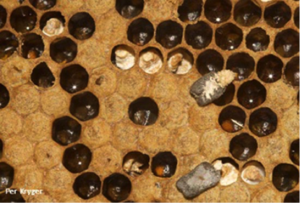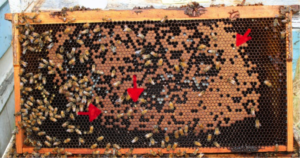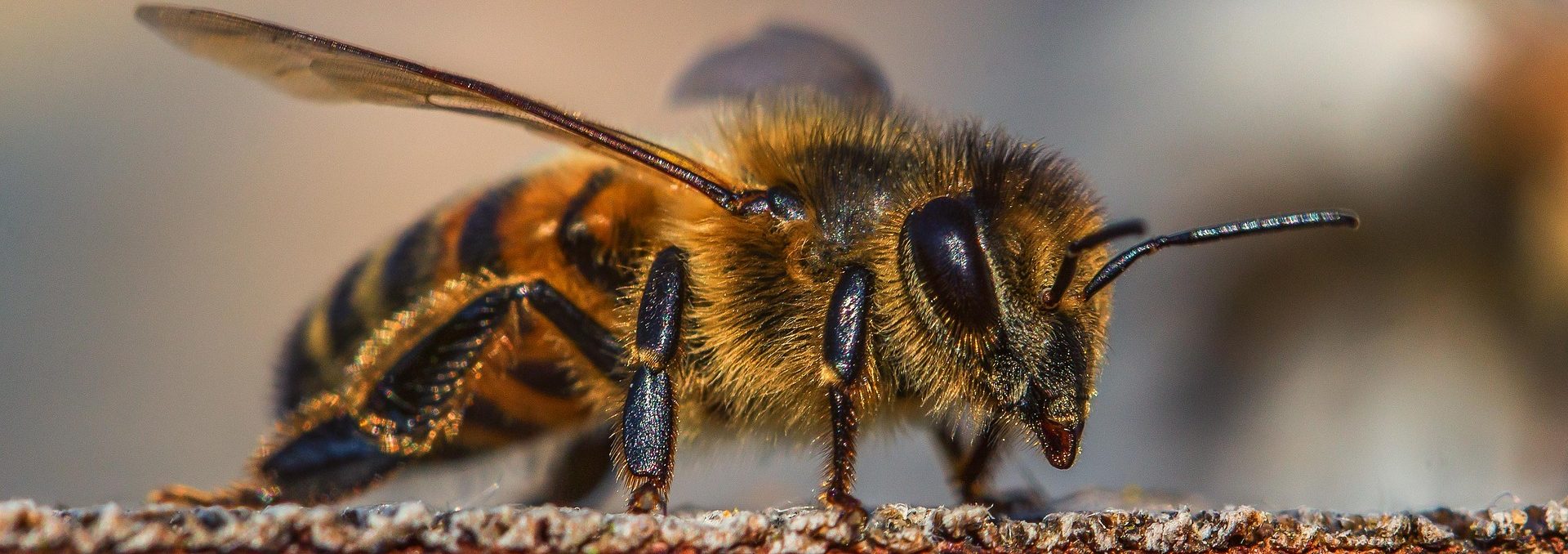 Chalkbrood is caused by the fungus Ascosphaera apis and it affects both sealed and unsealed brood.
Chalkbrood is caused by the fungus Ascosphaera apis and it affects both sealed and unsealed brood.
Appearance of infection
At first, larvae are covered with a fluffy white fungal (mycelial) growth that looks like white mould on bread or very fine cotton wool. Larvae become swollen inside the cell. Later, the dead larvae dry out to become hard, white or grey/black chalk-like mummies.
Appearance in cells
In unsealed cells (as for sacbrood).
In sealed cells – light or dark sunken cell caps, many with perforations (pin holes).
Appearance in combs
In a heavy infection, the brood pattern is scattered.
Confusing symptoms
Chalkbrood symptoms may be mistaken for other brood diseases, such as American foulbrood (AFB), sac-brood, European sac-brood (EFB) or even white pollen. However, once identified there is no mistaking the appearance and consistency of larvae affected by chalkbrood.
Housekeeping
Bees may detect dead larvae under cell caps, chew holes in cappings and remove mummies. A hive with good hygiene habits usually removes mummies within 10 days. Mummies are dropped to the hive floor and later, outside the entrance.
Transmission
Spores are highly infectious and are carried in contaminated pollen by infected foraging bees with spores left at floral and water sites, by queens, drifting bees, and drones. Shifting bees on trucks with an open entrance causes drift and hence spreads disease. Spores remain viable for up to 15 years or more in equipment and soil. Use of contaminated sites and old equipment could lead to infections. Interchange of equipment by the beekeepers also spreads the disease.
Stress
A change in brood-nest temperature can trigger the chalkbrood disease. When nurse bee numbers become insufficient to cope with weather extremes (cold clustering and heat fanning), the brood may be left unattended. Usually, the first larvae affected are those around the edges of the brood where the brood temperature may be higher or lower. Stress of any kind can cause the signs of the disease to become apparent. Common causes of stress are:
- high and low temperatures
- wet or dry conditions
- poor nutrition
- failing queen
- poor hive management
- moving hives.
Diagnosis
The Biosecurity Sciences Laboratory in Brisbane provides a brood-disease identification service.
